Difficulty in walking is one of the most common types of disability in the US. According to reports, around 7% of Americans seriously struggle with walking or climbing stairs. This figure is much lower for people aged 18-34 (1%), but much higher for older people.
Adults aged 75 and older and those aged 65-74 are most likely to have this kind of disability (30% and 15%, respectively). Difficulty in walking is much more than just an inconvenient symptom: many people with this condition struggle with independent living, reduced income, and progressive disability.
However, walking difficulties can be caused by a wide range of factors, and not all of them necessarily lead to long-lasting life-limiting conditions – if promptly addressed. If caused by an injury, your symptoms will disappear when the damaged components of the hip, leg, foot, or knee are treated.
On the other hand, if your mobility issues are constant, getting worse, or accompanied by symptoms such as joint pain and swelling, you may be dealing with a chronic underlying condition.
Fortunately, in no case should walking difficulties be seen as a sentence to living a limited life. The revolutionary approach, Neuragenex Neurofunctional Pain Management , is created to tackle the systemic inflammation at the root of your chronic pain and musculoskeletal disorders.
Without medications or surgery, this protocol will help you address the roots of your symptoms and regain mobility. Learn all you need to know below.
Understanding The Signs And Symptoms
Walking difficulties or abnormalities refer to having an abnormal gait (walking pattern). There can be many reasons for having trouble walking, including genetics, traumatic injuries, and diseases that impact the mechanics of your muscles, bones, nerves, or ligaments in the leg, foot, or hip.
These conditions may affect only one part of your leg – such as the knee – or compromise the entire limb.
Depending on what’s causing your walking abnormality, this can be an acute condition, which usually resolves itself when the underlying cause is tackled, or a chronic disorder. When your walking difficulties are chronic, you may experience disability in your daily life and struggle to live independently.
Several different abnormal gait patterns lead to walking difficulties. These include:
- Scissor gait. The legs are bent slightly inward and the knees may cross or hit each other during walking.
- Propulsive gait. This gait is characterized by a slouched rigid posture, with the head and neck thrust forward during walking.
- Steppage gait. The toes are pointing downward during walking, which causes them to scrape the ground even when the leg is lifted.
- Waddling gait. This occurs when shifting weight from side to side or from one leg to another while walking.
- Spastic gait. Dragging the feet or walking very stiffly.
Other common gait abnormalities include erratic foot placements, unsteady gait, and involuntary or jerky walking patterns. Gait problems that arise from nerve damage may also resemble a horse’s front legs walking.
If you are struggling to work normally, you may also begin to notice other symptoms. These usually include the following ones.
Numbness And Tingling In The Legs And Feet
Numbness and tingling occur when one or more nerves are irritated, damaged, or compressed. This can occur in the event of conditions such as sciatica, spinal stenosis, or fibular nerve dysfunction.
The nerves in the peripheral nervous system (those outside of the brain and the spinal cord) are responsible for carrying signals relating to sensations and movement to the brain and vice versa.
When these nerves are compressed by other structures or damaged by disease, they may not be able to correctly deliver messages regarding pain, temperature, touch, or muscle movement. They may also start to fire up involuntarily, which can lead to sensations such as tingling, numbness, and “pins and needles,” also known as paresthesia.
Pain In The Hips And Lower Back During Walking
Pain in the hips and lower back is a non-specific type of pain, which means that it may derive from a wide range of causes and risk factors. Poor posture and overuse, for example, can strain muscles and add undue pressure on certain components of the back.
Health conditions commonly associated with this symptom, especially during walking, include sprains, strains, herniated discs, and sciatica.
The reason you may experience pain in the hips and lower back associated with walking difficulties is that the vertebrae, joints, and nerves of these structures are interconnected.
Muscle Cramps In The Legs
If you are experiencing muscle cramps in the legs, you may be struggling to maintain a balanced, steady gait. Cramping muscles and spasms can also increase your chances of accidents such as falls, which can lead to further leg injuries and ongoing disability.
Cramps are commonly associated with dehydration or temporary health events such as pregnancy and muscle fatigue. However, if you’ve noticed that this symptom lasts three months or more or recurs in time, the culprit may be a more serious underlying condition, including diabetes, kidney problems, and thyroid dysfunction.
Cramps and other involuntary muscle movements are also associated with conditions that affect the functioning of the nerves in the central and peripheral nervous system, such as spinal stenosis and neuropathy. These disorders interfere with the transmission of nerve signals relating to movement.
As a result, the nerve fibers located within the muscles of the leg, foot, and hips may not work as they should or may fire up unexpectedly, leading to cramps and fasciculations (muscle twitches).
Muscle Weakness When Lifting The Feet Or Maintaining Balance
Abnormalities in the gait and difficulty walking can derive from muscle weakness, which can manifest when attempting to lift your foot, move your leg forward, or maintain balance. The reasons behind this symptom include inactivity and leading a sedentary life, which, with time, can lead to reduced muscle conditioning, loss of muscle mass, and atrophy.
Studies have also shown that muscle fatigue, especially in the muscles supporting the ankle, is associated with decreased balance control in elderly people. More rarely, this symptom can be caused by foot drop, the inability to lift the forefoot while walking.
This condition arises from the weakness of the dorsiflexors of the foot, the muscles responsible for enabling the movements that lift the foot off the ground while walking. Foot drop may derive from muscular, neurologic, or musculoskeletal disorders, and lead to antalgic gait (a limp), which increases the risk of accidents and falls in the elderly.
Knee Joint Pain
Commonly, difficulty in walking is a symptom associated with musculoskeletal conditions that cause chronic pain. Pain in the knee joint, for example, can make movements such as bending your knee or climbing stairs difficult.
Abnormal movements can, in turn, add undue pressure to other components of the lower body, such as the other leg, and lead to mechanical issues as well as limping and abnormal gait.
Possible Conditions That Might Cause Walking Difficulty
Not all forms of walking difficulties are the same or have the same causes.
Some walking challenges come naturally with age. Even as you are trying to remain active and in shape, you may find yourself struggling a little more to keep up the pace or climb stairs.
Although these are normal changes that occur with age, there are positive actions you can take to optimize your physical performance as you age and decrease the risk of musculoskeletal conditions.
However, in some cases, walking difficulty arises from specific conditions that affect mobility. In this case, your symptoms may begin after an injury, continue getting worse over time, or become chronic (lasting three months or longer).
If you are struggling with chronic pain and reduced mobility, it is important to seek a treatment strategy that will help you address the cause of your condition and regain your normal gait. That’s because, in these cases, you can’t “ride out” your symptoms: taking medications may mask the pain, but the underlying problem will continue to progress over time.
Below, we’ll look at the most common conditions causing walking difficulties.
Injuries
Injuries affecting any part of the hip, leg, or foot can lead to trouble walking and mobility issues.
- Traumatic injuries. These occur when you receive a direct blow or are involved in a collision. Common traumatic injuries result in fractures, joint dislocations, and the complete detachment of ligaments and tendons from the surrounding bones and muscles (ruptures).
- Non-traumatic injuries. Non-traumatic and non-contact injuries often occur due to abnormal, sudden, or forceful movements. For example, twisting your ankle after landing from a jump or over-rotating your knee can overstretch ligaments and tendons or tear essential components of the joint (such as the meniscus in the knee).
Estimations show that the most common injuries affecting the lower extremities include sprains and strains (especially affecting the ankle) and fractures. They can occur due to accidents but are often a consequence of playing contact sports, falls while at home, or poor form during physical activity.
These are considered to be acute injuries. They can cause pain, joint instability, and the inability to bear weight on the affected leg. However, these symptoms should subside once the underlying cause is treated through immobilization and rehabilitation.
Spinal Stenosis
Spinal stenosis is a condition characterized by the narrowing of spaces within your spine, which houses the nerves of the spinal cord. This narrowing can place pressure on the nerves that travel through the spine, thus interfering with their ability to carry signals from different parts of the body to the brain and vice-versa.
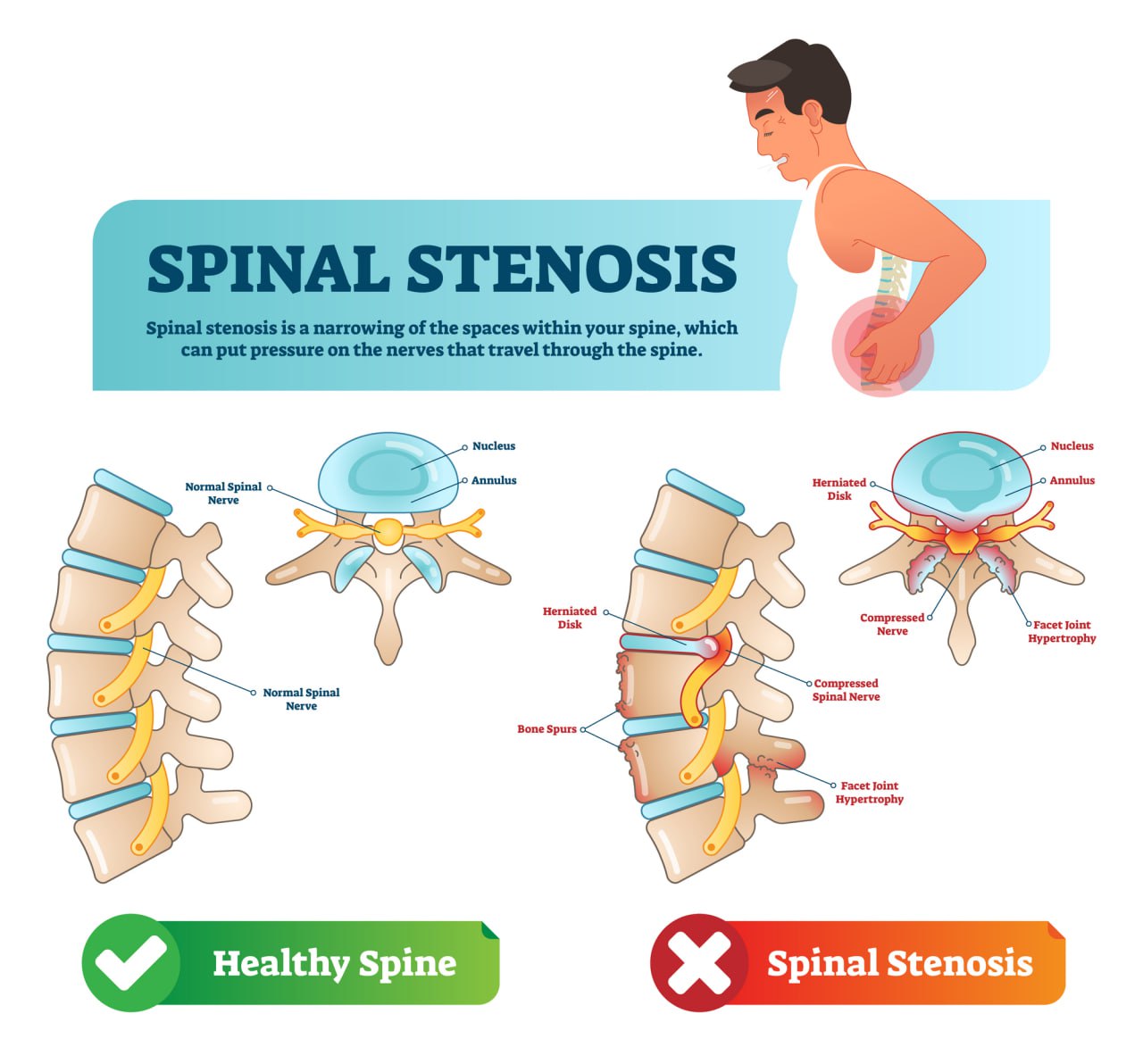
Most frequently, spinal stenosis affects the lower back and neck region of your spine, and it can have several causes, including changes related to osteoarthritis, traumatic events (e.g. car accidents), spinal tumors, and Paget’s disease.
If severe, this condition can impinge nerves, which causes symptoms like numbness, weakness, and, in extreme cases, problems with bladder or bowel control. These symptoms can begin around the area affected by the stenosis, but they can progress and begin to affect the hips and legs. If left unaddressed, spinal stenosis can permanently damage nerves and lead to long-lasting mobility impairments.
Lower back (lumbar) spinal stenosis today affects over 200,000 adults in the United States alone.
Joint Instability
Joint instability is a widespread condition, but it is not specific to a certain disease. You may have the sensation that your joint is unstable or unable to bear your body weight for different reasons.
For example, if a tendon or ligament in the knee joint has been stretched beyond capacity, it may not be able to keep the surrounding bones and muscles in place during movement. In turn, you may feel that your knee, hip, or ankle will “give up” while walking, leading to gait problems.
Other causes include:
- Osteoarthritis and conditions that lead to the breakdown of the cartilage (the joint’s cushioning component)
- Genetic components that lead to hypermobile joints
- Overuse
- Muscular imbalance or muscle weakness
Gout
Gout is a form of inflammatory arthritis, a condition that affects the joints due to high levels of uncontrolled inflammation. It occurs when uric acid, a substance your body produces during digestion, accumulates in the bloodstream. This build-up can lead to sharp urate crystals forming in the joints or surrounding tissues.
Over time, these crystals cause inflammation and irritation in the different joint components, which begin to degenerate. As the cartilage wears away and the bones become damaged, you may begin to experience mobility issues, intense joint pain (usually starting in the big toe), inflammation, and redness around the affected area.
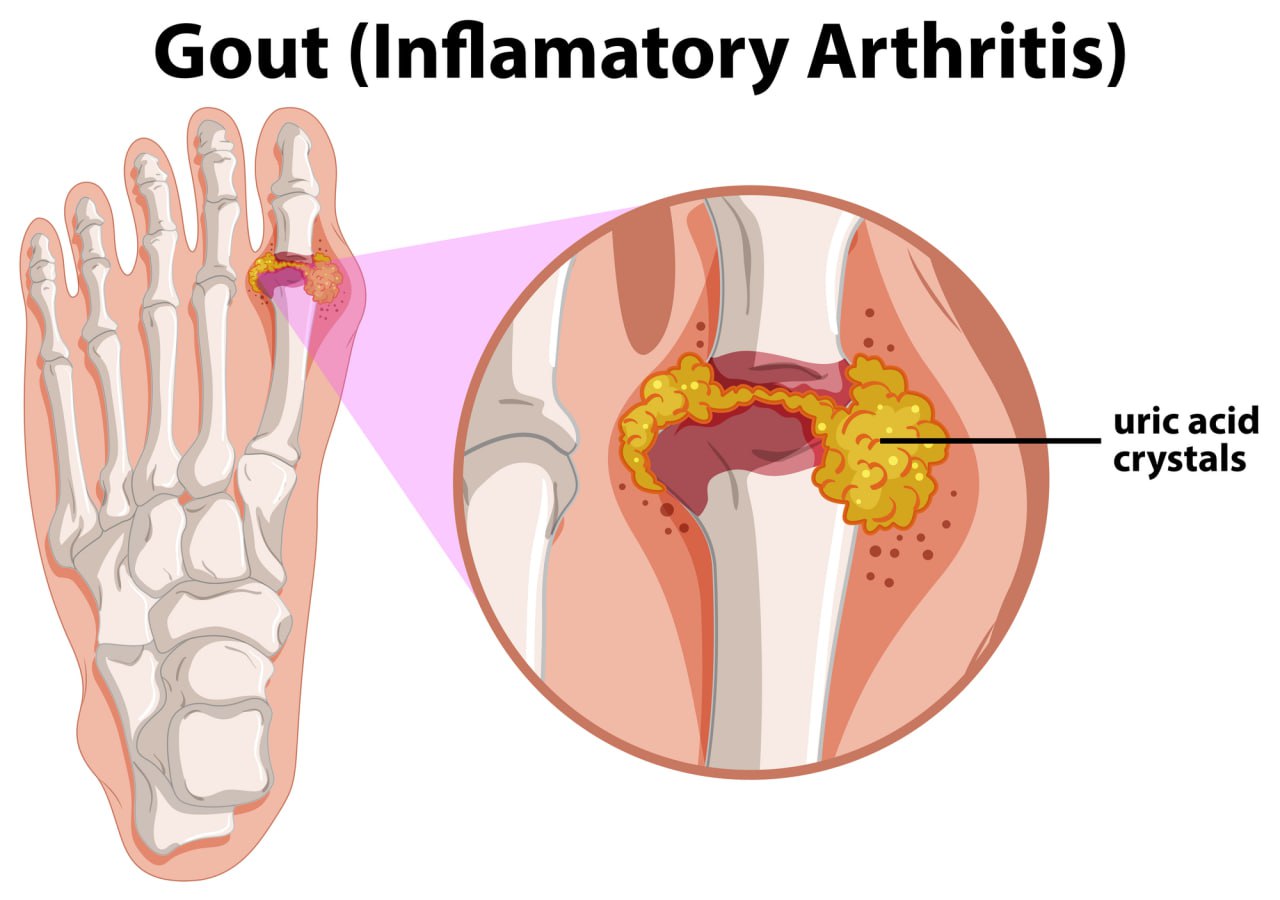
Factors contributing to gout include high-purine foods (e.g. meat, game, anchovies, and alcohol), obesity, certain medications, and kidney disease. Besides the joints of the big toe, which are the most commonly affected by gout, this condition tends to develop in the ankles and knees too – making it a significant risk factor for walking problems.
Most people with gout find it difficult to stand or walk during flare-ups, even if mild movement may help with symptoms. In general, studies have found that patients with a history of gout have slower walking speed and score poorly in gait speed, chair stand, and balance tests.
Foot And Ankle Problems
Walking problems can arise from deformities and inflammatory conditions of the ankle or foot. These can impact the way you walk or, due to pain, make movements undesirable. The most common conditions likely to impact your gait include:
The plantar fascia is a strong band of connective tissue composed of collagen fibers. It connects the heel to the toes, and it plays a vital role in supporting the arch of the foot, stabilizing the gait, absorbing shock, and enabling foot movements.
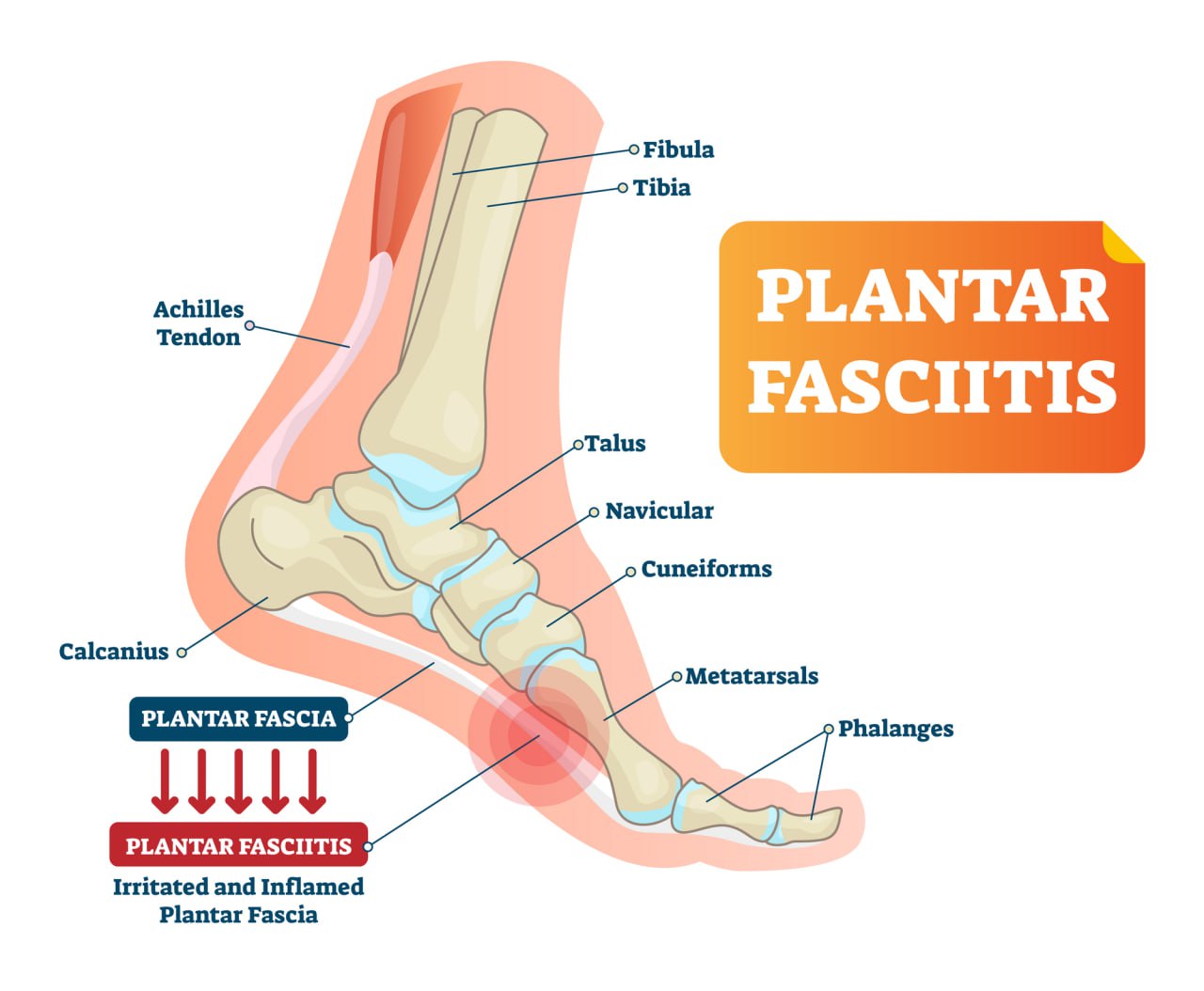
When the plantar fascia becomes inflamed or damaged, you may experience pain or reduced mobility. This condition is known as plantar fasciitis or plantar heel pain (PHP). It can occur due to overuse, repetitive high-impact movements, foot abnormalities (e.g. having flat feet), or changes in your physical activity.
Plantar fasciitis can cause severe pain and make movements undesirable. If left untreated, it can lead to further inflammation and pain, as well as more significant tearing and damage to the fascia.
- Achilles tendonitis
Tendonitis refers to inflammation or irritation of tendons, which are the strong fibrous cords attaching muscles to bones. The Achilles tendon is the largest one in the body, connecting the calf muscles to the heel bone. It plays a vital role in activities like running and jumping, and it prevents abnormal movements of the ankle.
Achilles tendonitis occurs when this tendon is repeatedly strained, often due to overuse or wear and tear. If you have Achilles tendonitis, you may experience symptoms such as pain and stiffness along your Achilles tendon, especially in the morning or after periods of rest.
Other symptoms include severe pain after exercise and the formation of hard nodules where the tendon has thickened. While the pain, alone, will impact your gait, a thickened, stiffer tendon can lead to progressive mobility issues.
- Foot deformities
Foot deformities refer to the abnormal anatomy or mechanics of the foot, and they can be either congenital or acquired. Some of the most common deformities include clubfoot, flat feet, splay feet, and heel spurs. When these deformities occur, you may struggle to walk properly.
As a consequence, your body may attempt to counteract this strain by placing undue pressure on other components of the foot, ankle, or leg, which can lead to conditions such as osteoarthritis and further deformities.
Musculoskeletal Disorders
Common musculoskeletal disorders – acute or chronic – leading to walking difficulties include:
Rheumatoid arthritis (RA) is an inflammatory, autoimmune disease that occurs when the immune system mistakenly attacks the body’s healthy tissues (such as the cartilage in the joints). This condition leads to swelling and pain in the joints, particularly affecting the knees and feet.
While it can affect any individual at any age, the most commonly affected groups are women between the ages of 40 and 60. It is estimated that over 1.3 million people in the US alone suffer from RA today.
Typical signals of RA include joint stiffness, chronic pain, or tenderness, which are the consequences of high levels of systemic, uncontrolled inflammation raging through the body. RA can also cause pain and swelling in the ankles or feet, which makes standing, walking, or everyday movements difficult.
Osteoarthritis (OA), also known as “wear-and-tear arthritis,” is a degenerative joint disease. It’s characterized by the breakdown and eventual loss of cartilage, which acts like a cushion within joints that absorbs shock during movement. It predominantly affects weight-bearing joints, such as the hip, knee, and feet.
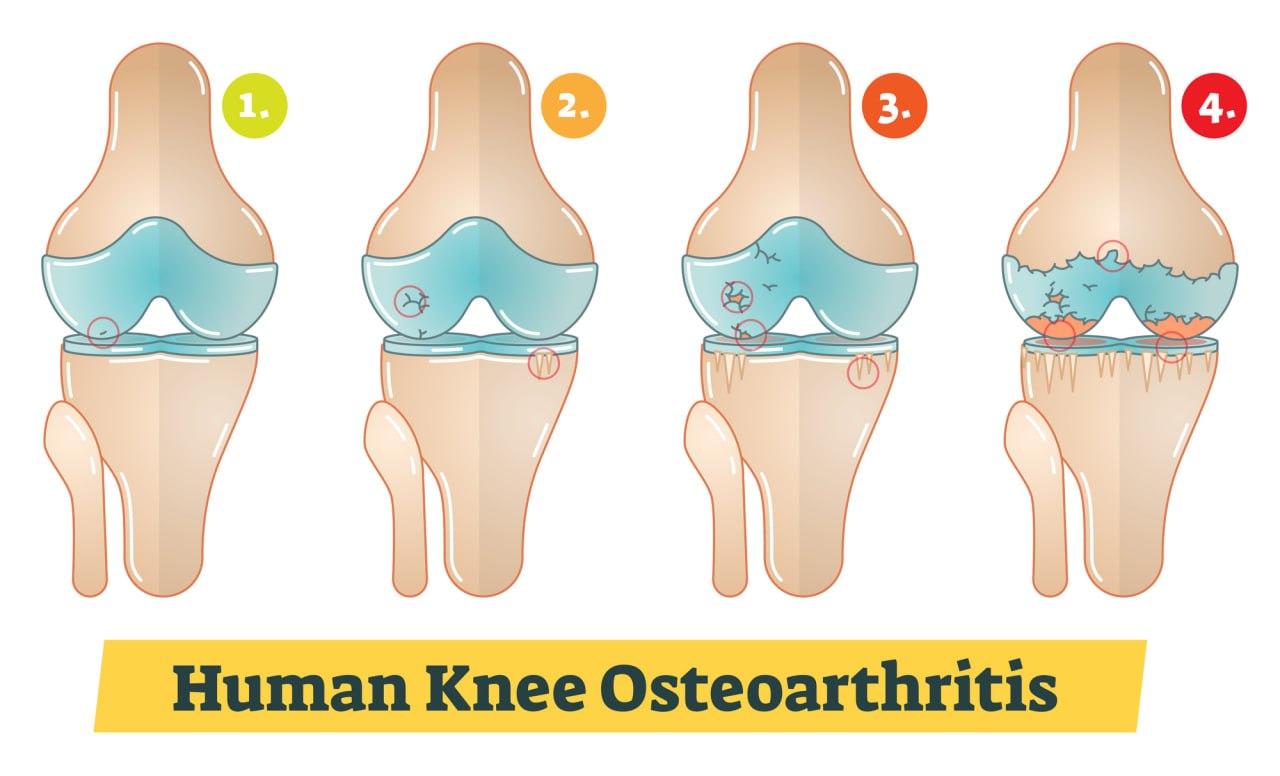
As the cartilage begins to wear down, you’ll experience a wide range of symptoms. These include pain, swelling, and joint stiffness. Over time, impact movement mechanics and the high levels of inflammation may also lead to complications, such as bone damage and bone spurs.
Given these symptoms, it isn’t surprising that OA can have a devastating effect on mobility, leading to abnormal gait, limited range of motion, and increased risk of falls. OA stands as one of the most common chronic conditions in America. Not only is it the most common form of arthritis, but it’s also a leading cause of disability in the elderly.
- Fractures
Fractures are a common musculoskeletal condition that occurs due to contact or non-contact injuries, like a fall or car accident. They are more common in the elderly with reduced mobility or those with osteoporosis (bone mass loss).
Globally, in 2019, there were over 178 million new fractures reported and 455 million cases of long-term symptoms following fractures.
A fracture is considered to be an acute form of pain, which should resolve itself once the underlying fracture has healed. However, inadequate treatment can turn fractures into chronic health problems, in which the pain, abnormal mechanics, and deformities can permanently impact your gait and ability to move freely.
- Sprains and strains
Sprains and strains are extremely common disorders, which occur when a tendon or ligament is stretched beyond capacity or in an awkward direction. They can occur as a consequence of a dislocation or fracture, but they are also common symptoms of a rolled or twisted ankle.
They lead to pain, inflammation, and, in severe cases, the inability to bear weight on your joints. People involved in sports (such as soccer and football) are at high risk of severe ligament and tendon injuries, such as knee ACL tears.
Similarly to fractures, sprains and strains are acute conditions that can be treated by helping the affected ligament or tendon heal. However, when this doesn’t happen, the pain can become chronic and impact your mobility and sports performance in the long term.
Neurological Disorders
Neurological disorders can affect any part of the central nervous system (the nerves in the brain and the spinal cord) and the peripheral nervous system (the nerves across the body, outside of the brain and the spinal cord).
These abnormalities prevent signals relating to movement, sensations, and autonomic functions (e.g. heartbeat, digestion, and blood pressure) from traveling between the brain and other areas of the body.
The symptoms of neurological disorders vary, depending on what areas of the nervous system are affected, but they all tend to progress over time if not addressed. Some of the most common neurological disorders impacting mobility include:
- Multiple sclerosis (MS)
MS is a chronic disease that impacts the central nervous system and causes the body’s immune system to mistakenly attack the myelin, which is the protective layer over nerve fibers in the brain and spinal cord. While it can affect individuals of all ages, it primarily targets adults between 20 and 50 years of age.
Common symptoms range from mild numbness in the limbs to severe paralysis or loss of vision. In particular, in people with MS, mobility issues such as difficulty walking or maintaining balance can occur due to muscle weakness and spasticity.
- Parkinson’s disease
Parkinson’s disease gradually leads to severe motor problems. This disorder occurs when neurons in a specific part of the brain, responsible for producing dopamine, start to die off. Its symptoms include tremors, rigidity, bradykinesia (slow movements), and postural instability, all of which hinder normal walking patterns and mobility.
PN is a medical condition where the nerves outside of the brain and spinal cord are damaged or diseased. PN can occur due to diabetes, infections, or some hereditary conditions. Certain medications and lifestyle factors (such as smoking, abusing alcohol, and suffering from nutritional deficiencies) can also lead to nerve damage.
The tarsal tunnel is a narrow space in the ankle where the posterior tibial nerve, which runs down the leg, passes through. Tarsal tunnel syndrome is a disorder that occurs when this nerve becomes compressed or pinched within the tarsal tunnel, leading to pain and discomfort in the foot and ankle.
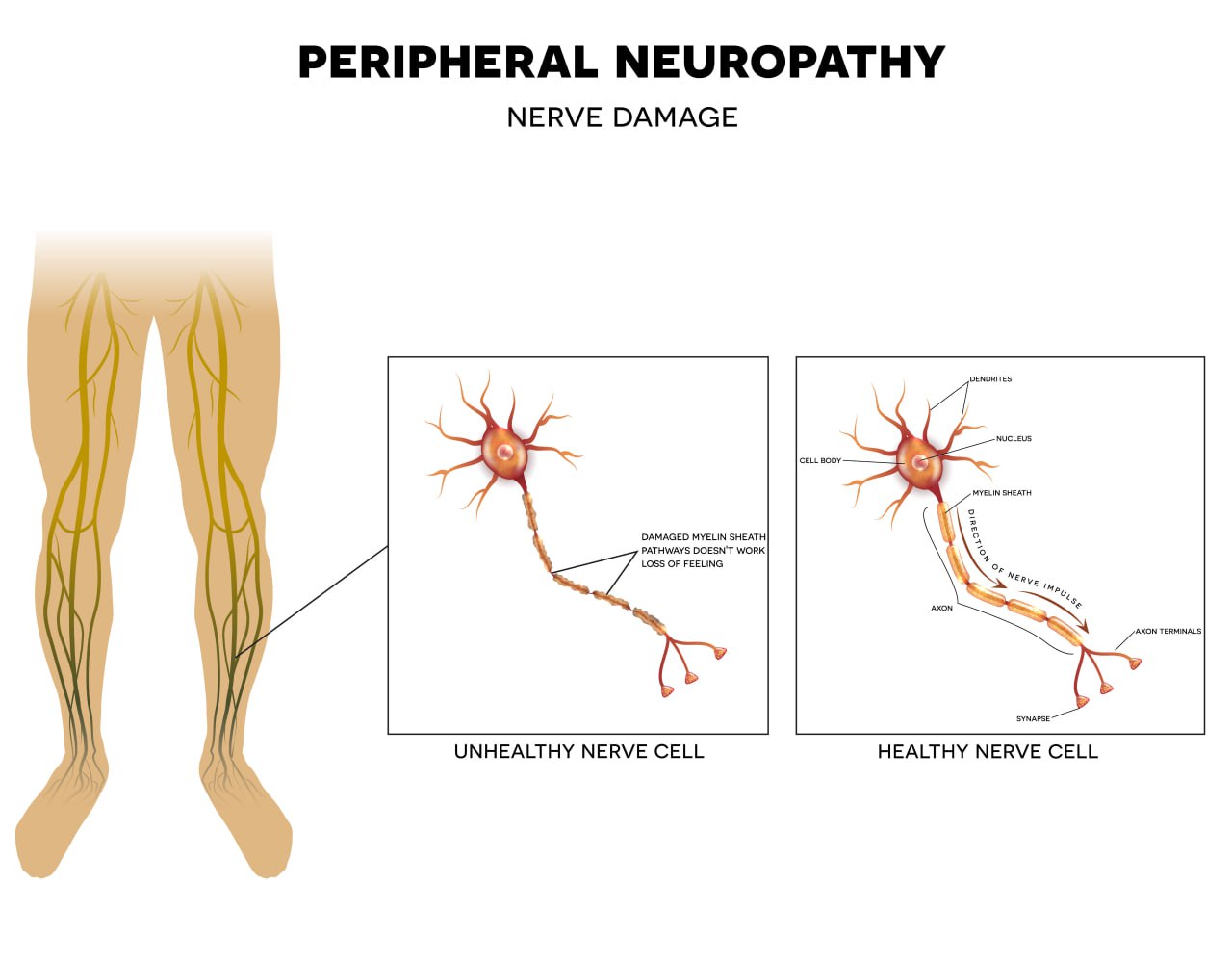
Depending on what nerves are affected and the extent of the damage, symptoms may include numbness, tingling in the limbs, and an inability to sense pain or changes in temperature.
Over time, these symptoms can cause mobility, coordination, and balance issues. Today, it is estimated that more than 20 million people in the US have some form of peripheral neuropathy.
- Stroke
A stroke occurs when blood flow to a part of your brain is cut off. This can happen due to a blood clot blocking the flow or because of a bursting or leaking blood vessel in the brain. It mainly affects the elderly, but it can happen at any age.
Stroke symptoms often come on suddenly and include facial drooping, arm weakness, and difficulty with speech. If left untreated, it could lead to severe disability or even death. After a stroke, many people also experience challenges with walking, often associated with impaired nerve signaling, muscle weakness, and coordination issues.
- Spinal cord injuries
The spinal cord functions as a “highway” for nerve signals traveling to and from the brain. This band of tissues also plays a role in processing certain nerve signals and enabling functions such as movements and feeling sensations.
Spinal cord injuries can be traumatic (e.g. being involved in an accident or experiencing a spinal fracture), but may also occur due to surgical injuries, sports accidents, and disease.
Peripheral Artery Disease (PAD)
Peripheral artery disease is a common circulatory problem, which affects 8 to 12 million people in the US alone and significantly increases the risk of heart attack and stroke. It occurs when narrowed arteries reduce blood flow to your limbs, particularly affecting the lower extremities.
Some of the most common telltale symptoms of PAD include leg pain when walking and slow-healing wounds on the feet or legs. Over time, this condition can significantly compromise your mobility, due to discomfort, cramping, numbness, and weakness. Because of the disuse that ensues, PAD may also lead to muscle atrophy and complications of further reduced circulation to the lower limbs.
Lifestyle Factors Contributing To Walking With Difficulty
Your lifestyle is one of the most influential factors impacting the risk of suffering from walking difficulty and mobility issues. However, your lifestyle, alongside the risk factors we are about to explore, is modifiable – a simple but powerful strategy that can help you keep at bay the risk of mobility issues.
Let’s look at the main factors to focus on:
- Obesity or excess weight. Being obese or overweight, characterized by having a high BMI (body mass index), can place unnecessary pressure on the lower limbs and joints. This increases your risk of suffering from mobility-reducing conditions like osteoarthritis. Obesity is also a major risk factor for cardiovascular disease, stroke, diabetes, and in turn, peripheral neuropathy.
- Sedentary lifestyle. Having a sedentary lifestyle can lead to muscle weakness and circulatory problems, and it can increase your chances of gaining weight. These factors, in turn, increase the risk of circulatory problems, muscle atrophy, falls, and fractures, which can impact your mobility.
- Inactivity after surgery or injury. Prolonged periods of inactivity or bed rest can harm your musculoskeletal system, lead to muscle wasting, and slow down the circulation of necessary blood, oxygen, and nutrients to the limbs.
- Alcohol or substance abuse. Alcohol, as well as substance and nicotine abuse, can have a neurotoxic effect, meaning that it can damage your nerves and increase the risk of peripheral neuropathy. Alcohol can also harm your brain health and lead to problems such as diabetes.
- Stress and fatigue. Stress and muscle fatigue can add fuel to the fire of systemic inflammation, thus aggravating conditions such as arthritis, osteoarthritis, tendonitis, and plantar fasciitis.
Ultimately, maintaining a balanced diet and lifestyle, avoiding alcohol, and remaining active throughout your life can help you significantly lower the risk of developing mobility issues as you age. If you have experienced an injury or surgery, partnering with a physical therapist can help you speed up rehabilitation and restore your limb function.
When To Seek Medical Attention
If you are experiencing mobility issues or pain during walking, you should never let your symptoms go unaddressed. Doing so can cause some underlying conditions to progress over time, ultimately leading to permanent disability. This may be the case if you have undiagnosed peripheral neuropathy, osteoarthritis, or injuries such as fractures and plantar fasciitis.
Seeking an accurate diagnosis early on can help you find the best line of treatment for your needs and avoid the most severe consequences of these disorders.
Additionally, in some cases, walking difficulties that come on suddenly may indicate a medical emergency, such as a stroke. You should call 911 immediately if your mobility issues are accompanied by:
- Sudden gait changes
- Face drooping
- Arm or leg weakness
- Severe headache
- Vision changes
- Speech difficulties
- Confusion
How To Manage And Relieve Walking Difficulties
Gait abnormalities may resolve on their own when the underlying condition causing them is treated. For example, if you are struggling to walk properly because of a fracture or ligament tear, you’ll be able to return to a healthy gait once your injury has healed.
However, in the case of inflammatory or chronic conditions, your doctor may prescribe one or more of the following treatment strategies:
- Medical treatments. Medical treatments may be prescribed to ease your symptoms while your injury is healing or to combat infections. In certain cases, your doctor may also prescribe treatments to manage conditions such as diabetes or multiple sclerosis.
-
-
- NSAIDs – Non-steroidal anti-inflammatory drugs work by blocking the COX enzyme, which is associated with the production of prostaglandins. Reduced production of prostaglandins results in a temporary reduction in pain and inflammation. Common NSAIDs include aspirin and ibuprofen.
-
- Physical therapy. Physical therapy plays an important role in aiding the recovery process after injury, surgery, or disease. It may help you understand how to restore an ideal gait and counteract the effects of leg or foot deformities.
- Assistive devices. Assistive devices may be used to reduce disability in people with progressive diseases or to provide aid during the recovery process. Some of the most common devices include:
-
-
- Canes
- Walkers
- Wheelchairs
-
- Lifestyle modifications. Lifestyle modifications are perhaps the most powerful tool for patients to reduce the risk of walking difficulties and disabilities. Working with a counselor, patients should look at increasing physical activity levels, avoiding alcohol and nicotine, optimizing their diet, and improving their relationship with stress, rest, and sleep.
- Surgery. Surgery may be considered as a last resort, if other treatments have failed or if walking difficulties are impacting a person’s ability to live independently. Surgery often aims to restore the function of joints through synthetic components (i.e. joint arthroplasty), free up compressed nerves, or repair damaged joint components.
It is important to note that these treatment strategies do very little to address the root cause of your condition, and, in most cases, they will expose you to side effects, risks, and long rehabilitation times. Because of this, they are not considered to be the best, safest, or most efficient option in the treatment of long-term conditions such as osteoarthritis.
Does that mean that you’ll have to live with walking difficulties forever? Fortunately, no. Let’s see how below.
The Neuragenex NFPM Protocol For Walking Discomfort And Limitation
Struggling with walking difficulties can have a profound impact on your ability to work or enjoy your favorite activities. But what makes this condition unbearable for many is the fact that, often, treatment strategies do very little to efficiently resolve the underlying cause of your disability.
Neuragenex Neurofunctional Pain Management is now providing a safer, more efficient alternative that does not involve medications or invasive interventions. Through electroanalgesia, specialized IV therapy, and lifestyle counseling, this whole-person, revolutionary approach targets the systemic inflammation that is at the root of most mobility-limiting conditions. In turn, it can help you regain your mobility and ultimately magnify your quality of life.
Electroanalgesia
Electroanalgesia is a pain management technique that uses high-pulse electrical current to ease pain, boost blood circulation, improve mobility, and induce...
IV Therapy
IV nutritional therapy, or intravenous therapy, involves administering vital nutrients directly to the bloodstream through an IV. This type of treatment bypasses the digestive system, allowing for maximum absorption and utilization of nutrients by the...
Lifestyle Counseling
Lifestyle counseling is an approach to managing chronic pain that involves identifying, assessing, and modifying lifestyle factors contributing to an individual's pain. For example, lifestyle factors such as nutrition, physical activity, stress, sleep quality...
Conditions Associated With Difficulty In Walking That We Manage With Neuragenex NFPM
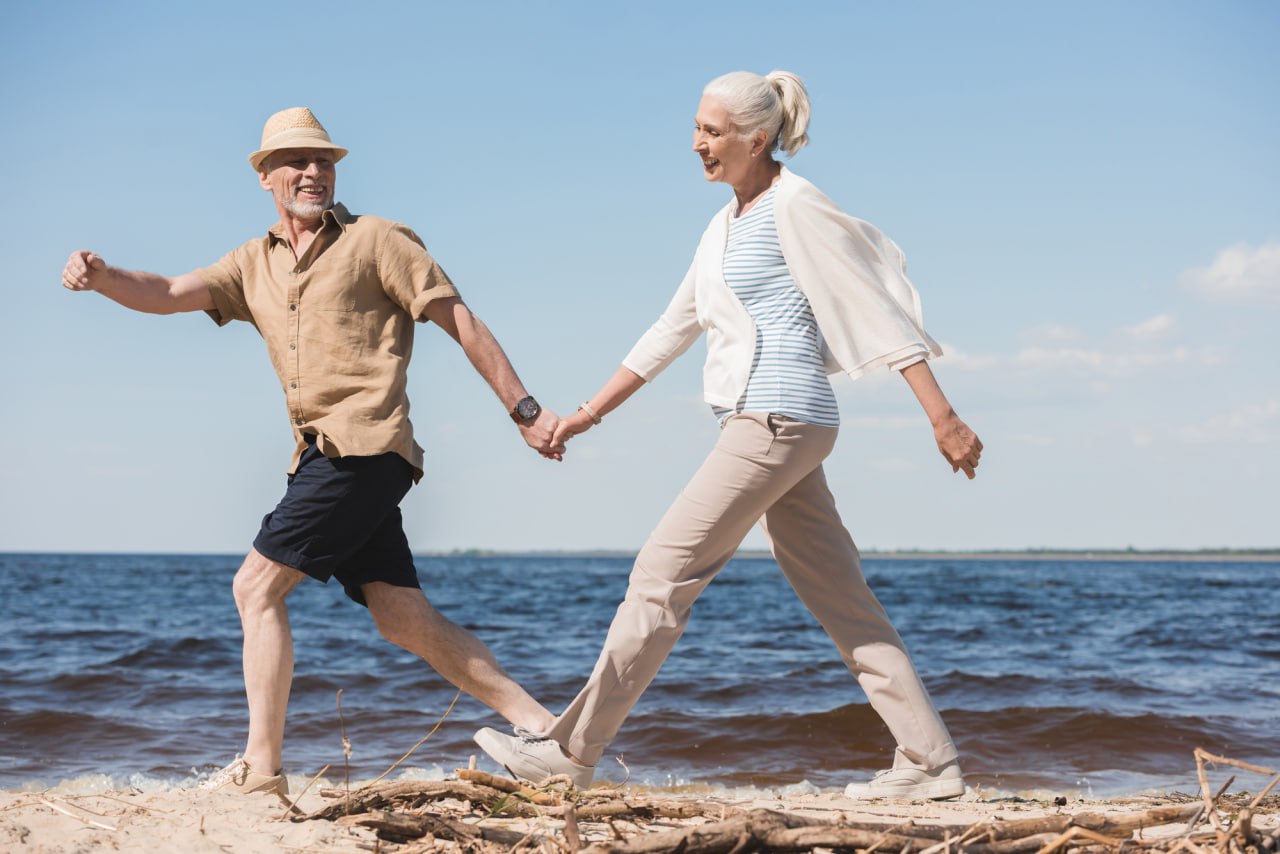
Neuragenex Neurofunctional Pain Management does a lot more than just ease your symptoms: it tackles the unifying cause of the disease: systemic inflammation. By doing so, it is also efficient in addressing a whole host of conditions that derive from high levels of uncontrolled inflammation. Learn more about how Neuragenex Neurofunctional Pain Management can help below.
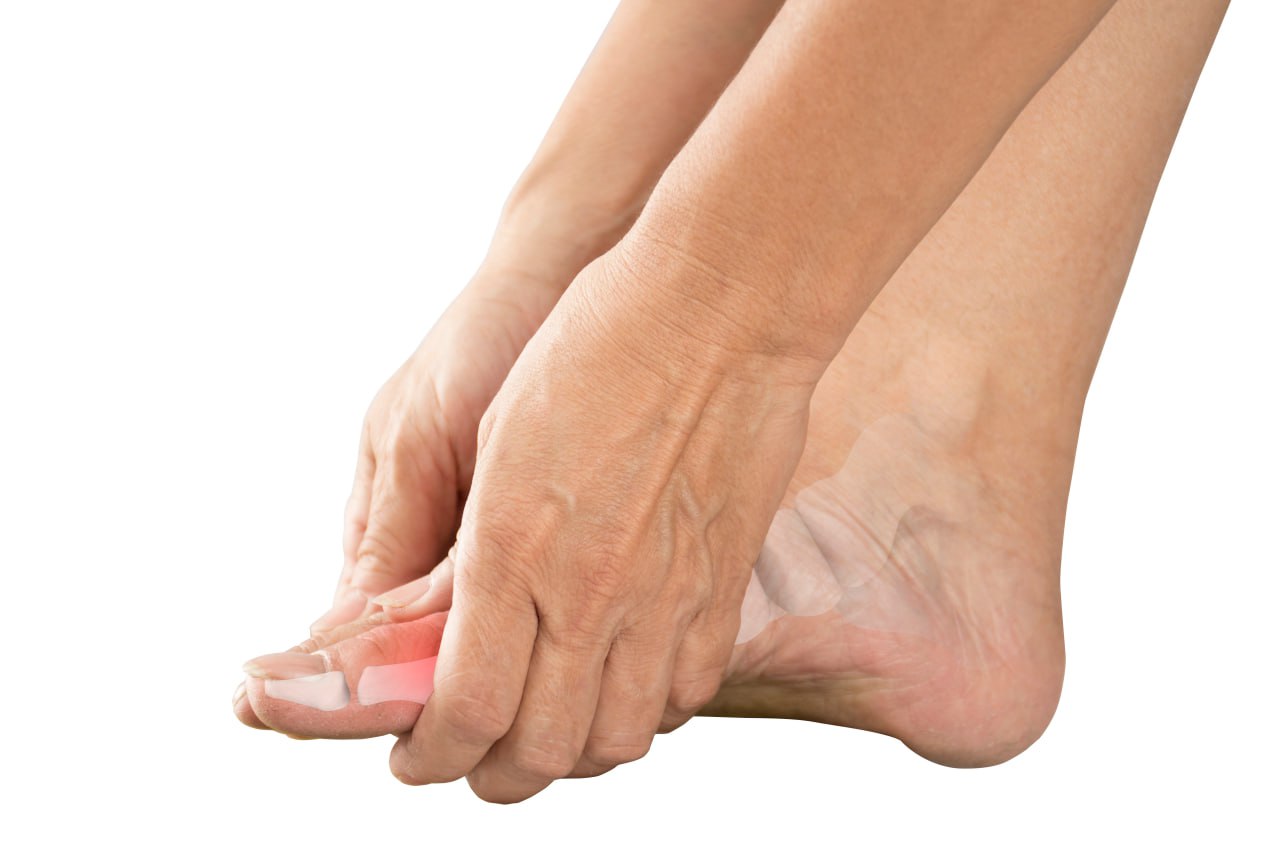
Gout Pain Treatment
Gout is a painful condition that can cause severe joint inflammation and swelling. It can lead to chronic pain and mobility issues that can have an enormous impact on your quality of life. Fortunately, the Neuragenex Neurofunctional Pain Management protocol...
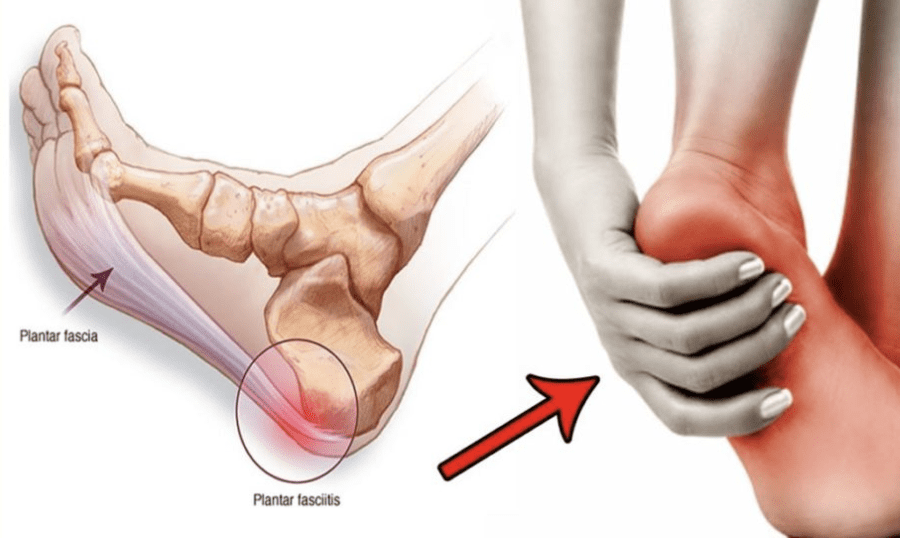
Plantar Fasciitis Pain Treatment
Neuragenex NFPM is a non-surgical, drug-free solution to relieve pain associated with plantar fasciitis. Our revolutionary treatment helps to reduce inflammation and improve mobility while providing extended relief from chronic heel pain. With our Neuragenex...
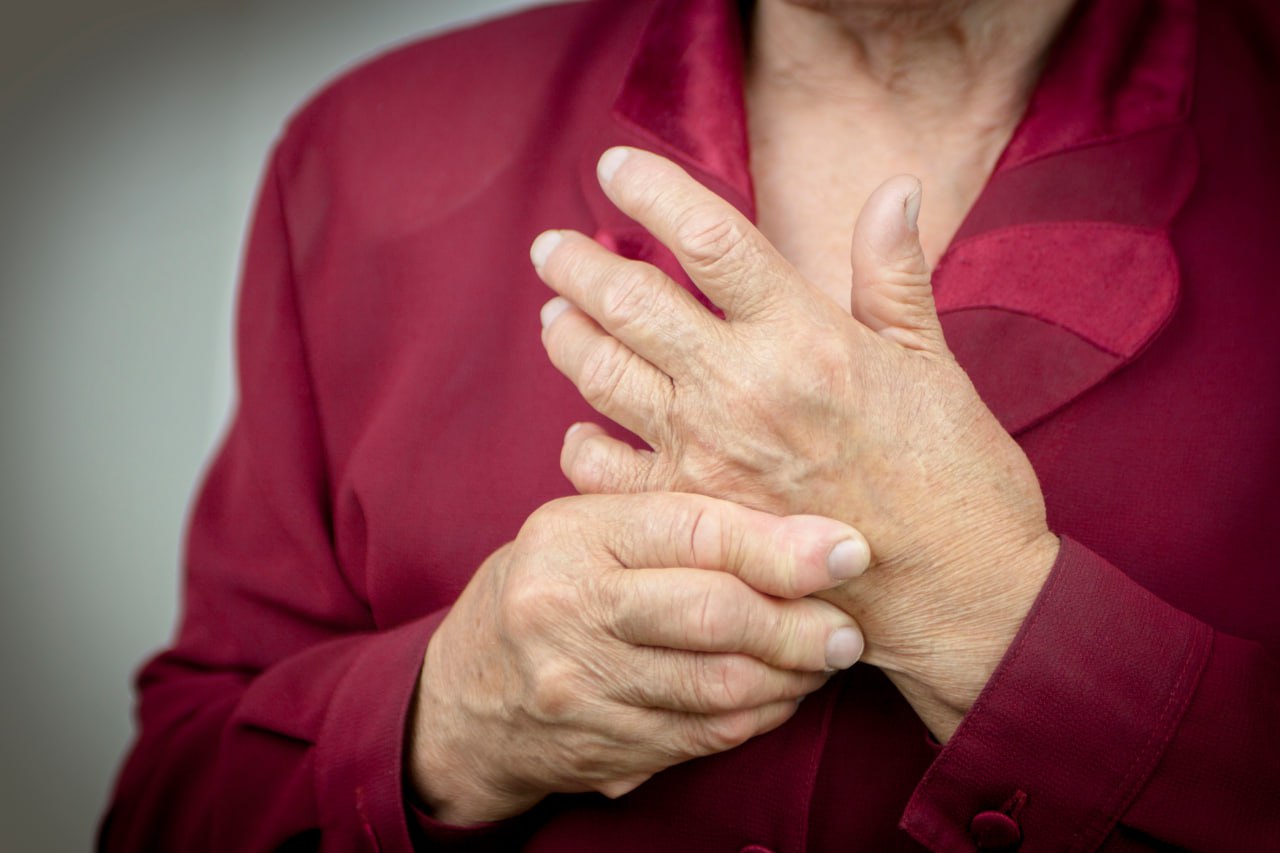
Rheumatoid Arthritis Pain Treatment
Rheumatoid arthritis can be a debilitating and painful condition that causes swelling, joint damage, and immobility. We offer a non-invasive, non-chiropractic solution to alleviate the pain associated with rheumatoid arthritis. Our treatments are designed to...
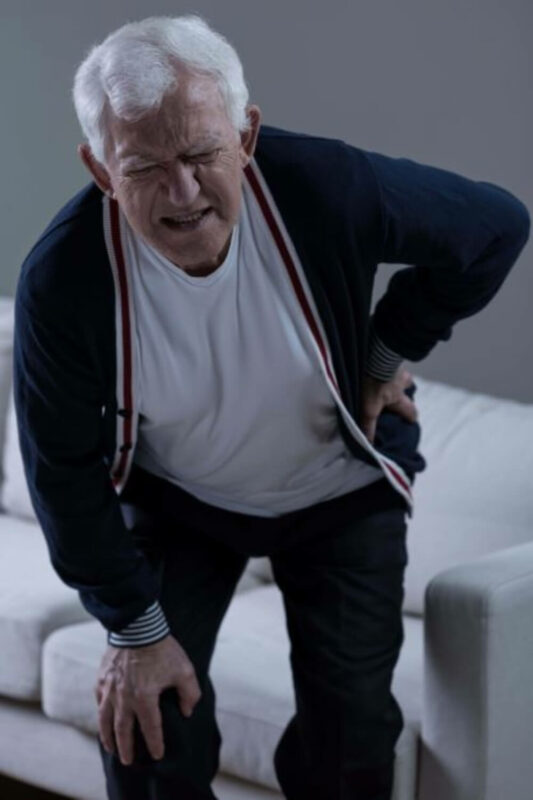
Osteoarthritis Pain Treatment
Osteoarthritis is often linked to joint pain. But the impact that this condition has on your life is of much greater magnitude. If you have osteoarthritis, the chances are that you experience a pain so intense that it prevents you from climbing stairs,...
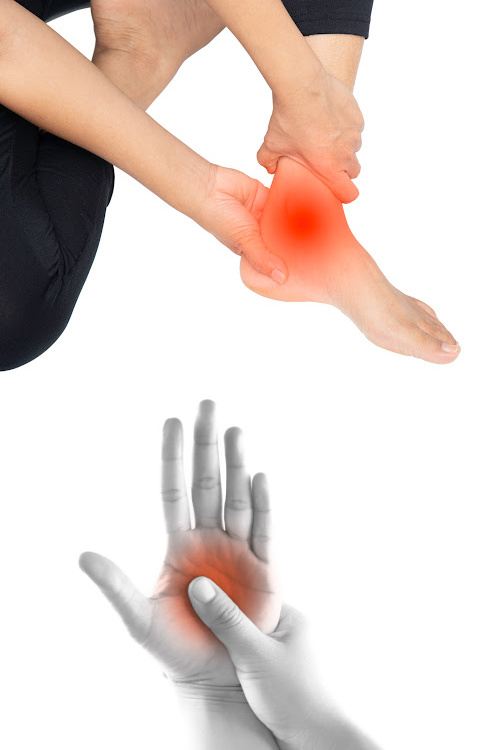
Peripheral Neuropathy Pain Treatment
We offer a unique and leading-edge approach to treating the burning, tingling, throbbing pain that may be associated with peripheral neuropathy or nerve damage. We have helped 100’s of patients, just like you, reduce their pain fast and get back to living...
Overcome Walking Difficulties With Effective Solutions
Walking difficulties don’t have to be a sentence to living a life reliant on medications or walking aids. Nor should your mobility issues condemn you to living with unbearable pain or fearing surgery.
With Neuragenex Neurofunctional Pain Management, we use this revolutionary approach designed to tackle the inflammation at the root of your pain and walking difficulties, so that you can get back on your feet and live your life to its fullest.
Get expert advice on managing walking challenges.




